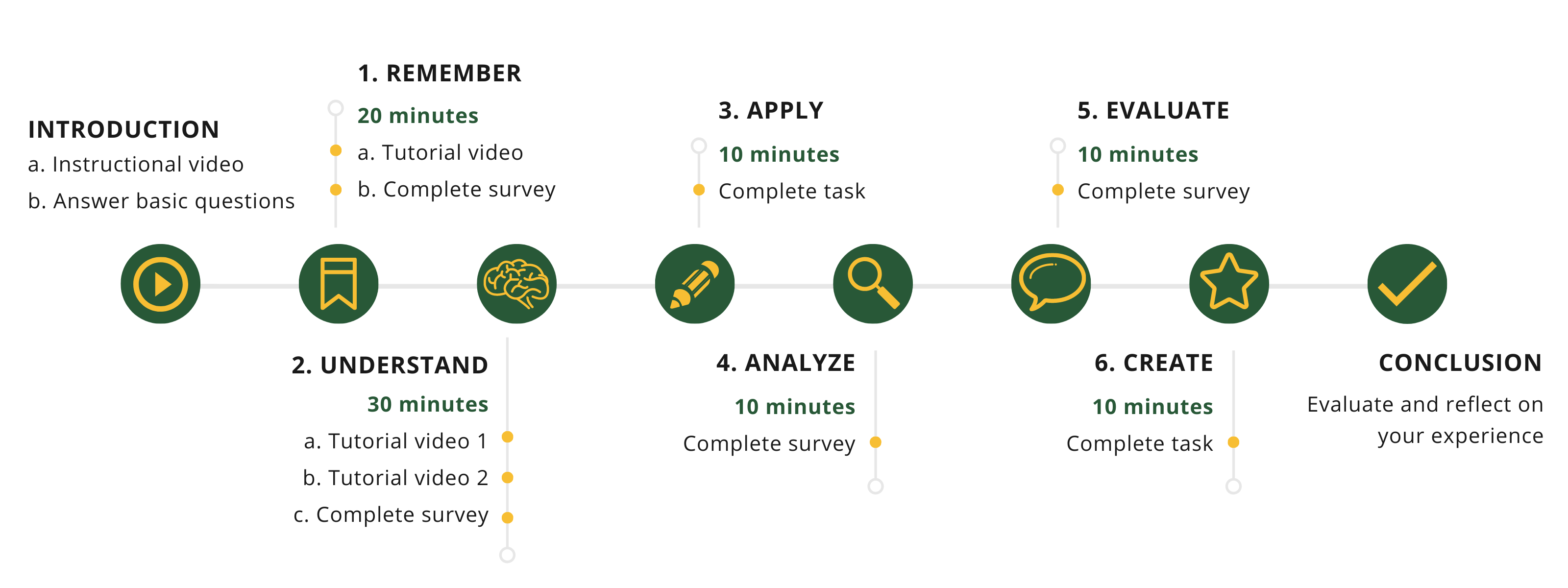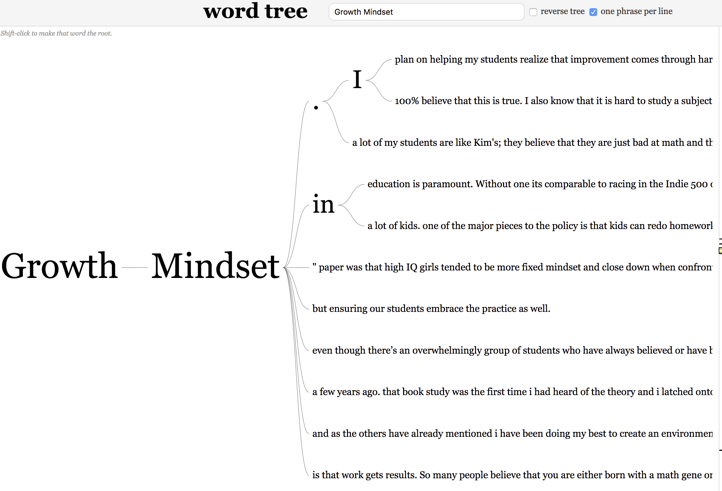Research
Visualization Literacy and Pedagogy
To enable the critical evaluation of information being presented in the forms of charts, it is crucial to increase the visualization literacy of general audiences and students. We have experimented with a few approaches to increase the visualization literacy of students and general audiences.

Bloom’s taxonomy-based modules for Parallel Coordinate Plots Literacy. [Peng ‘22].
In addition to being the one of the primary organizers of the first workshop on the Pedagogy of Data Visualization at IEEE VIS 2016, our group has also explored novel ways to teach visualization in the classroom. One of our papers evaluated the utilization of various types of rubrics (numeric, verbal, written) and was recently published at IEEE Computer Graphics and Applications - “Lessons Learned From Quantitatively Exploring Visualization Rubric Utilization for Peer Feedback.”
Computer Science Education
In the CS Education field, the emphasis has been on exploring innovative pedagogies in the classroom and on supporting academically-talented students to low-income backgrounds, as part of our NSF S-STEM project.
We recently presented a poster at SIGCSE on Acknowledging inequities in tech through a community-engaged learning course. In collaboration with faculty directors to five other universities, we published a paper on our experiences with helping academically talented STEM students succeed. We have recently published work on the identity development among our group of S-STEM scholars and other CS students at the ASEE Conference.



As part of a previous NSF-supported project, IDoCode, we published papers on a teacher-training course, the benefits of Team-Based Learning (TBL), and a paper describing the structural change in the computing education landscape in Idaho brought about by our IDoCode grant.
Mobile Data Visualization
As more and more data gets consumed on mobile devices, it is becoming increasingly important to learn more about how to present data effectively on mobile devices. I co-authored two chapters in the Mobile Data Visualization book.



Additionally, we have published papers on Context-providing techniques for visualizing off-screen data and Developing a speech-based app for monitoring blood glucose levels for older adults.